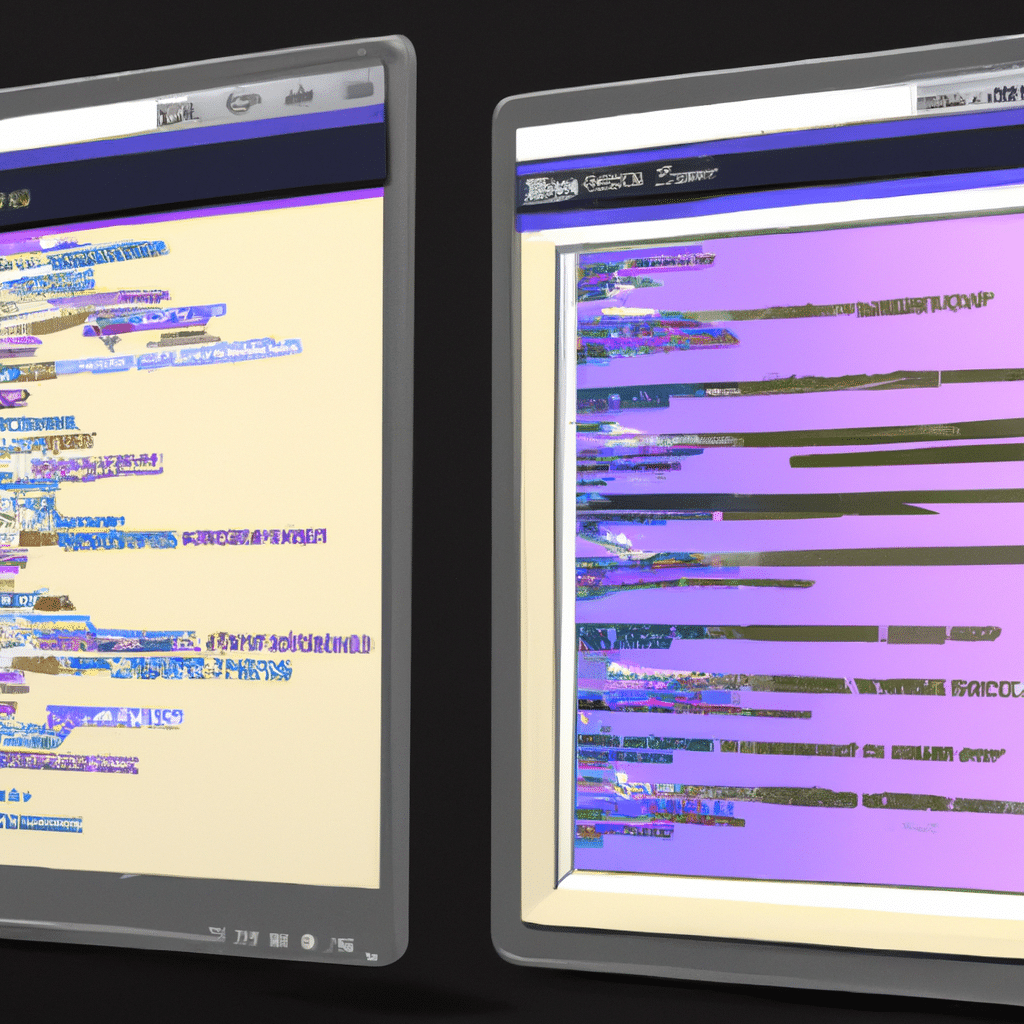The Differences Between Front-End and Back-End Web Development
As businesses and organizations continue to grow their online presence, the demand for web developers has also increased. However, not all web developers are created equal. There are two main types of web development: front-end and back-end. In this article, we will explore the differences between front-end and back-end web development, the tools and languages used in each, and the skills required for success.

What is Front-End Web Development?
Front-end web development, also known as client-side development, is the practice of creating and implementing the client-facing side of a website or application. This includes the design, layout, and functionality that users interact with. Essentially, front-end developers are responsible for creating the user interface that users see and interact with.
Tools and Languages Used in Front-End Web Development
Front-end web developers use a variety of tools and languages to create the user interface of a website or application. Some of the most commonly used tools and languages include:
- HTML: Hypertext Markup Language, used for creating the structure and content of a website or application.
- CSS: Cascading Style Sheets, used for adding style and design to a website or application.
- JavaScript: A programming language used for adding interactivity and functionality to a website or application.
- jQuery: A JavaScript library used for simplifying and streamlining JavaScript coding.
- Bootstrap: A CSS framework used for creating responsive and mobile-friendly websites.
Skills Required for Front-End Web Development
Front-end web development requires a variety of skills, including:
- Understanding of HTML, CSS, and JavaScript
- Knowledge of responsive design and mobile-first development
- Familiarity with front-end frameworks, such as Bootstrap or Foundation
- Understanding of user experience (UX) and user interface (UI) design principles
- Ability to work with design tools such as Photoshop or Sketch
What is Back-End Web Development?
Back-end web development, also known as server-side development, is the practice of creating and implementing the server-side logic of a website or application. This includes the business logic, database integration, and server-side scripting required for the website or application to function properly.
Tools and Languages Used in Back-End Web Development
Back-end web developers use a variety of tools and languages to create the server-side logic of a website or application. Some of the most commonly used tools and languages include:
- PHP: A server-side scripting language used for creating dynamic web pages and applications.
- Python: A versatile programming language used for a wide variety of applications, including back-end web development.
- Ruby: A programming language used for developing web applications and websites.
- Node.js: A server-side JavaScript runtime used for creating scalable and efficient web applications.
- MySQL: A popular open-source relational database management system.
Skills Required for Back-End Web Development
Back-end web development requires a variety of skills, including:
- Knowledge of server-side languages such as PHP, Python, or Ruby
- Understanding of database management and integration
- Familiarity with server-side frameworks, such as Laravel or Django
- Ability to work with APIs and web services
- Understanding of security and authentication protocols
The Differences Between Front-End and Back-End Web Development
The main difference between front-end and back-end web development is the focus of each. Front-end web development focuses on the client-facing side of a website or application, while back-end web development focuses on the server-side logic required for the website or application to function properly.
Front-end web developers are responsible for creating the user interface and user experience that users interact with. This includes the design, layout, and functionality of the website or application. Front-end web development requires a strong understanding of HTML, CSS, and JavaScript, as well as familiarity with front-end frameworks and design tools.
Back-end web developers are responsible for creating and implementing the server-side logic that powers a website or application. This includes the business logic, database integration, and server-side scripting required for the website or application to function properly. Back-end web development requires a strong understanding of server-side languages, database management, and server-side frameworks.
Conclusion
In conclusion, understanding the differences between front-end and back-end web development is crucial for anyone looking to pursue a career in web development. Front-end web development focuses on the client-facing side of a website or application, while back-end web development focuses on the server-side logic required for the website or application to function properly.
Both front-end and back-end web development require a unique set of skills and knowledge. Front-end web development requires a strong understanding of HTML, CSS, and JavaScript, as well as familiarity with front-end frameworks and design tools. Back-end web development requires a strong understanding of server-side languages, database management, and server-side frameworks.
By understanding the differences between front-end and back-end web development, you can make an informed decision about which path to pursue in your web development career.












